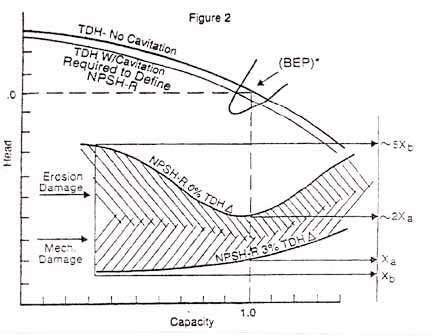About 6 months ago our client installed a Sulzer APT 53-6(O), a pump I selected, and we have been receiving reports from the field that they are having issues with it. It operates 3 gasoline truck loading arms. The problem is when one arm is operating the pump sounds like a concrete truck mixing...
We have heard that when 2 or 3 arms come on that the loud noises subside; based on that fact, an NPSH issue for this pump was ruled out because a higher flow would make NPSH issue worse, not make it go away.
The pump seems to be suffering from MCSF issues. I understand that with one gasoline loading arm on (600 gpm) it is operating outside the preferred operating region (see attached pump curve) which can shorten seal life but they have been through 3 seals since the pump became operational 6 months ago. The pump operates on a VFD and there is a control valve downstream programmed by an Accuload.
Anyone have any suggestions as to why this is happening?
We have heard that when 2 or 3 arms come on that the loud noises subside; based on that fact, an NPSH issue for this pump was ruled out because a higher flow would make NPSH issue worse, not make it go away.
The pump seems to be suffering from MCSF issues. I understand that with one gasoline loading arm on (600 gpm) it is operating outside the preferred operating region (see attached pump curve) which can shorten seal life but they have been through 3 seals since the pump became operational 6 months ago. The pump operates on a VFD and there is a control valve downstream programmed by an Accuload.
Anyone have any suggestions as to why this is happening?

